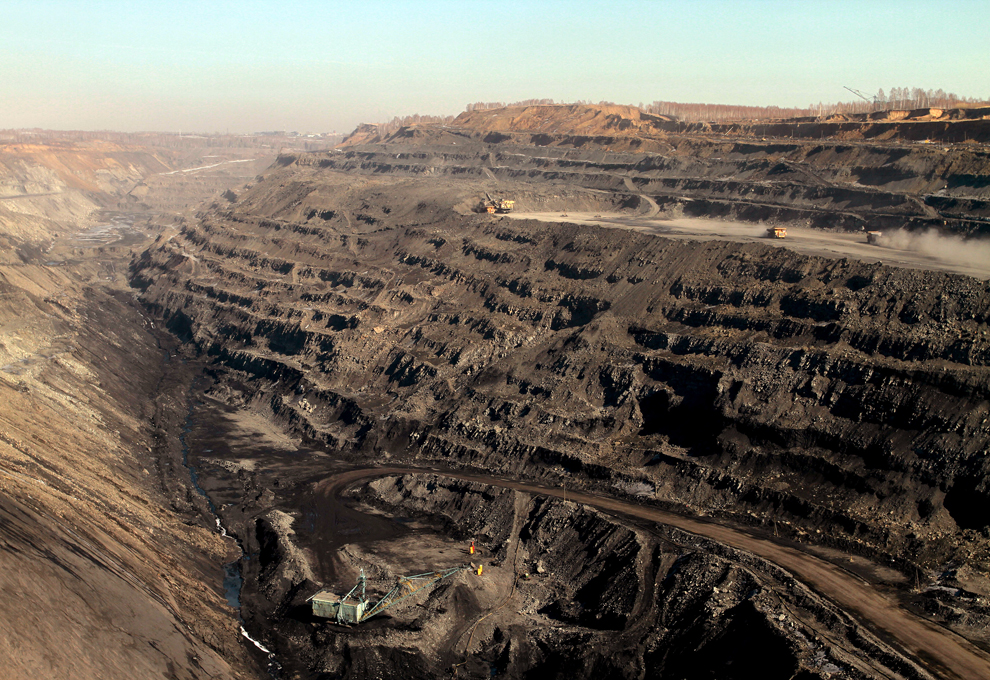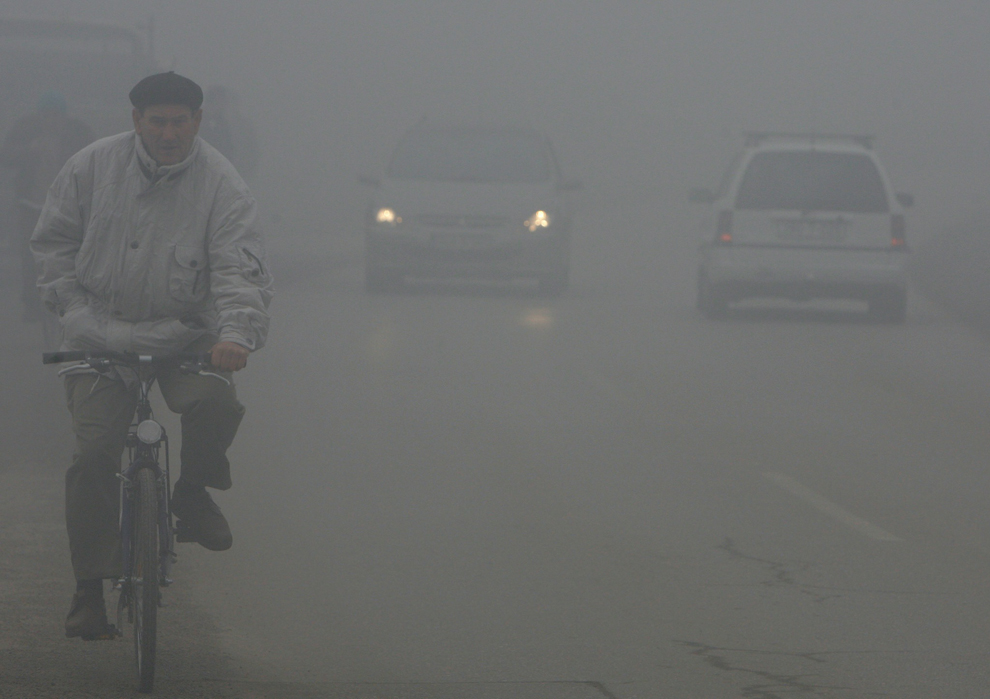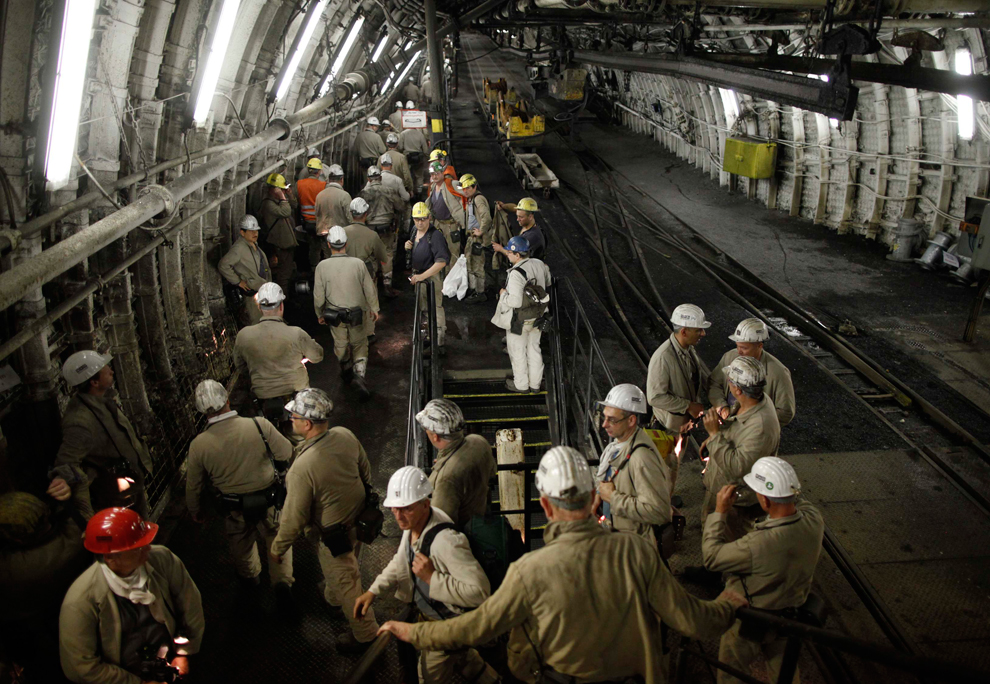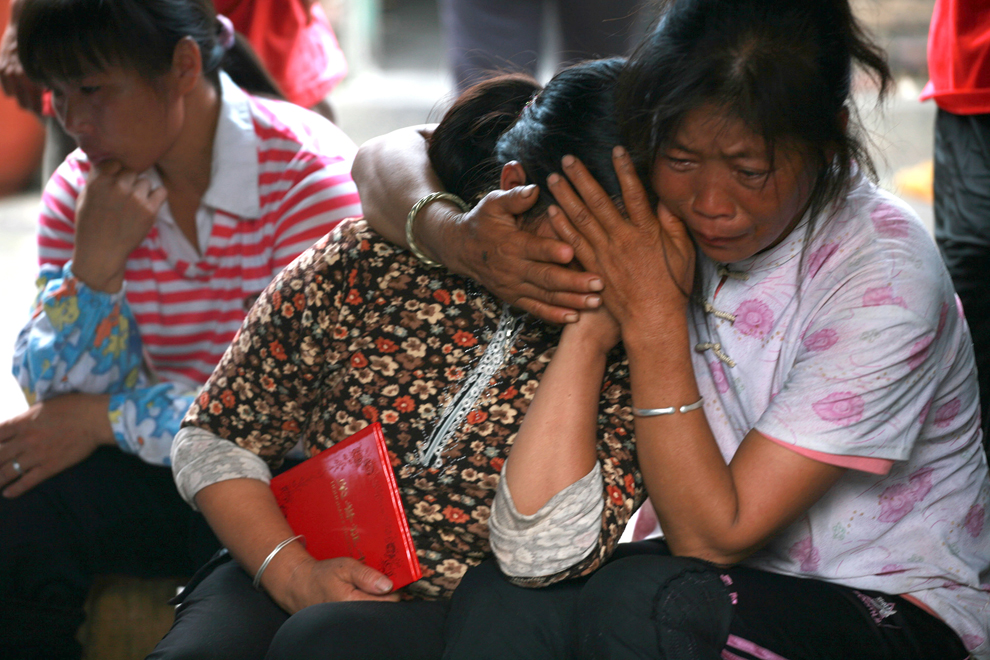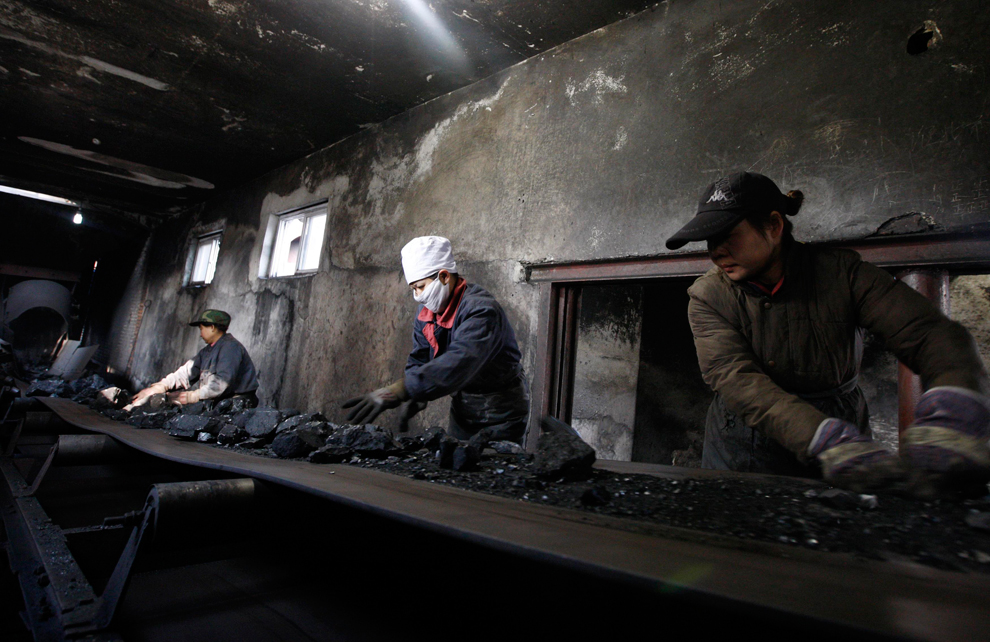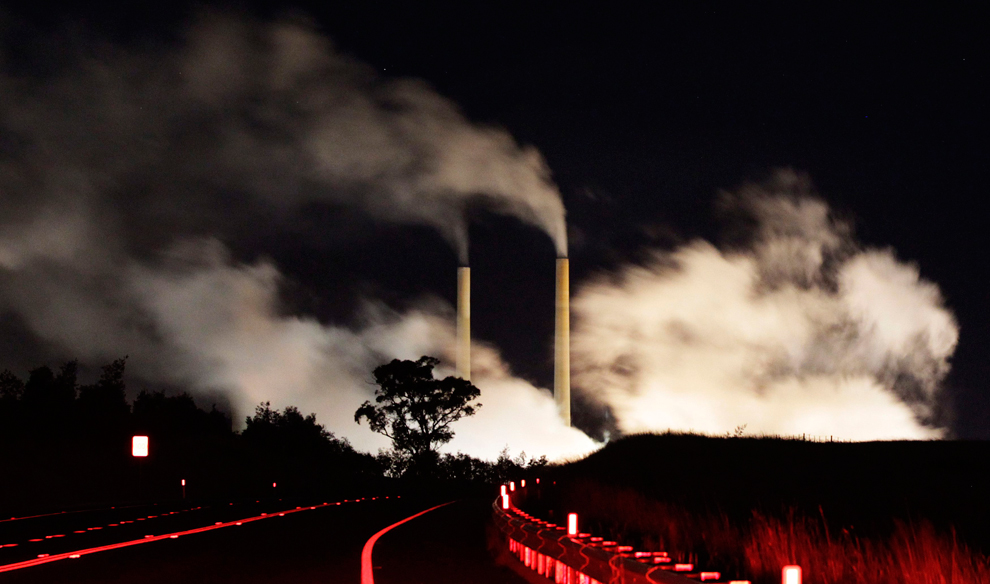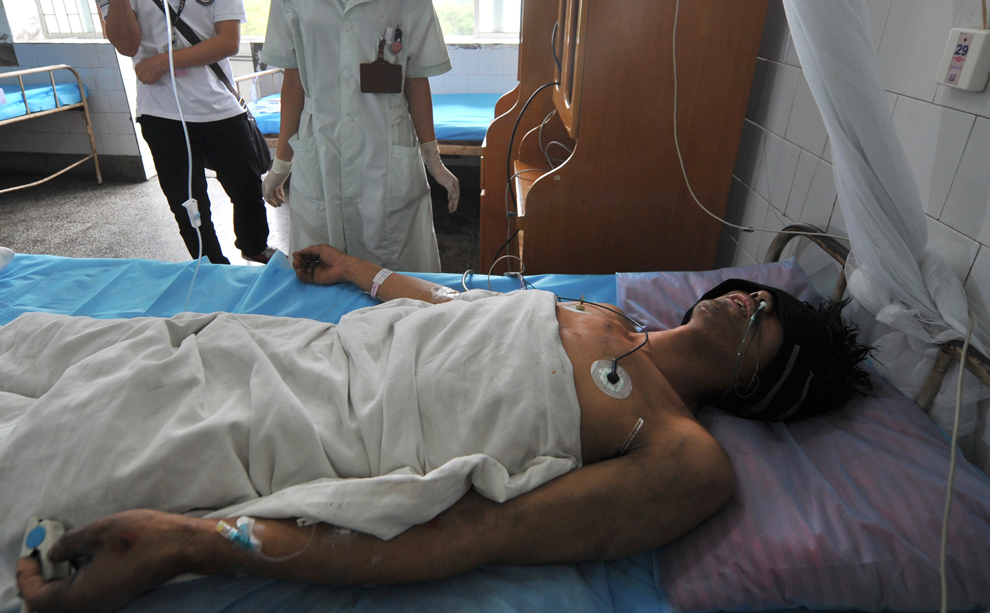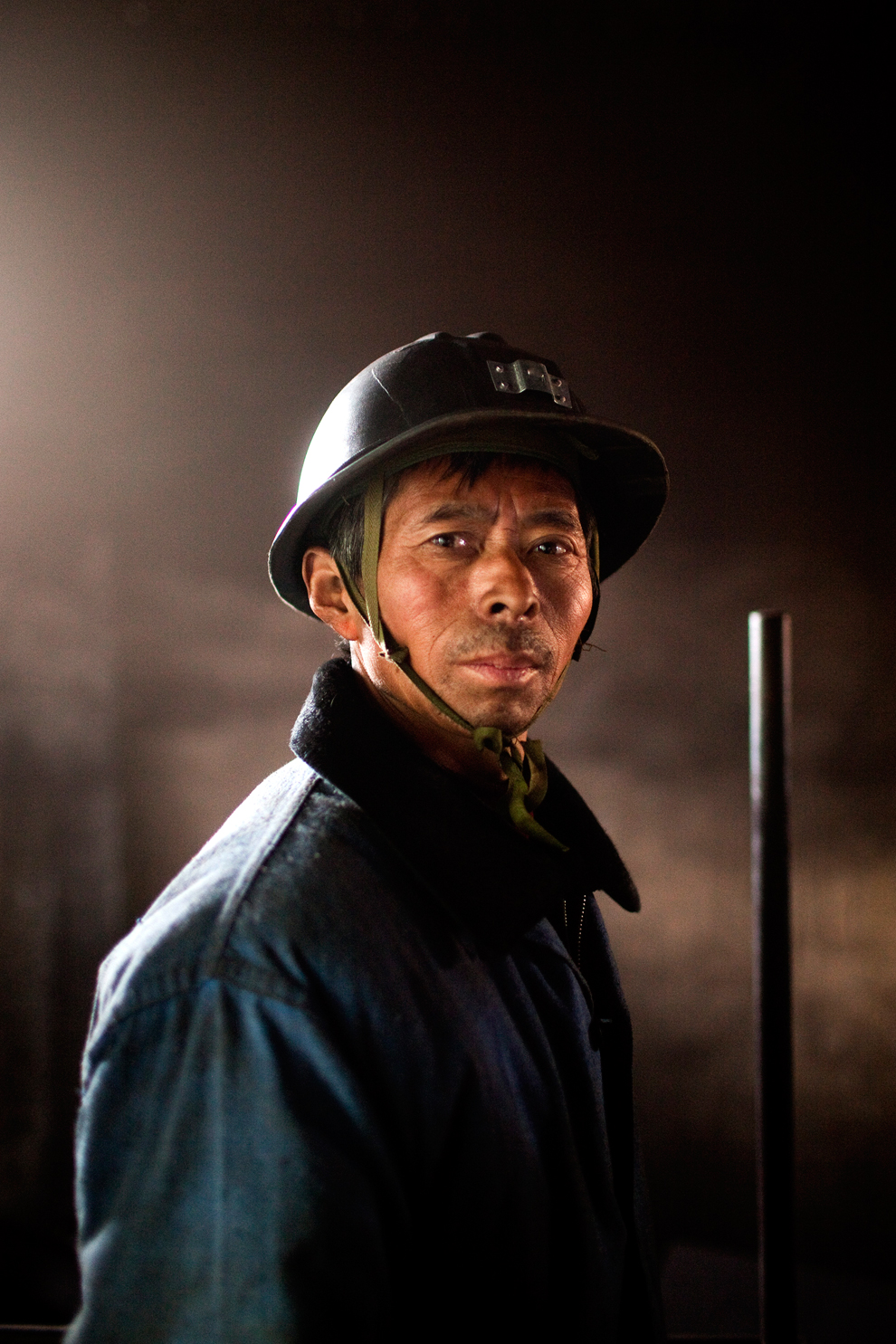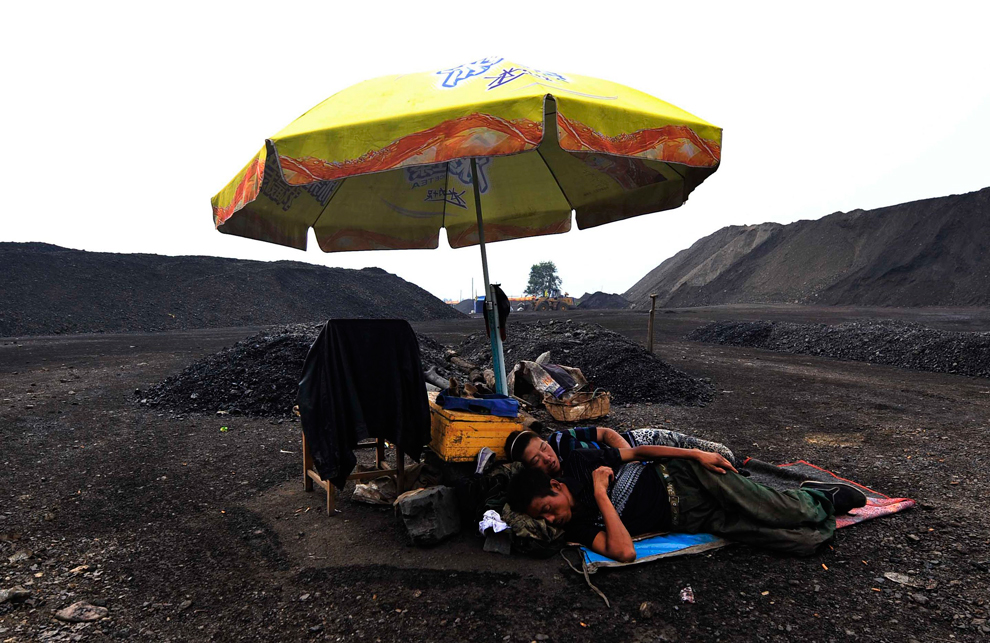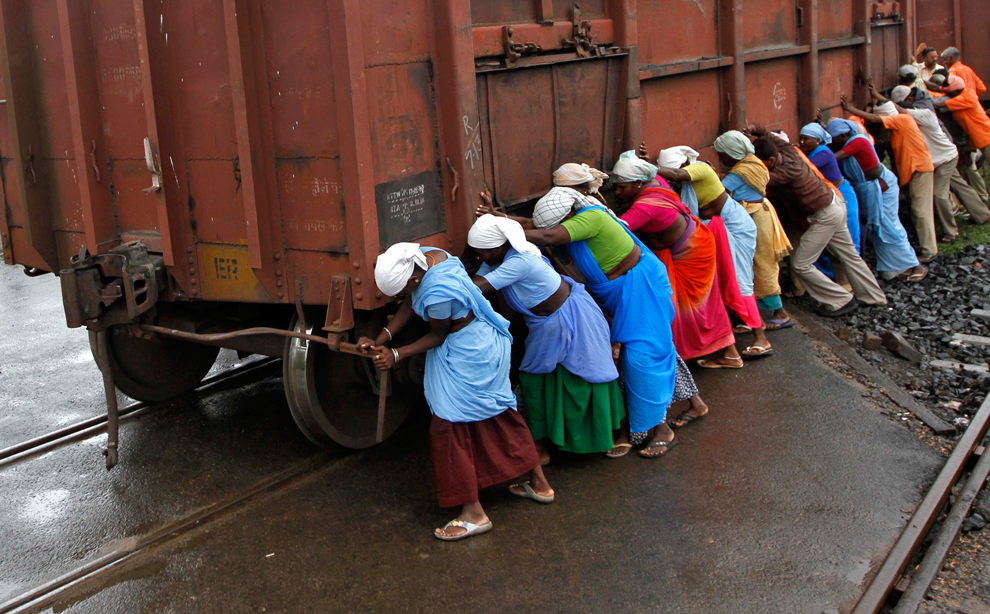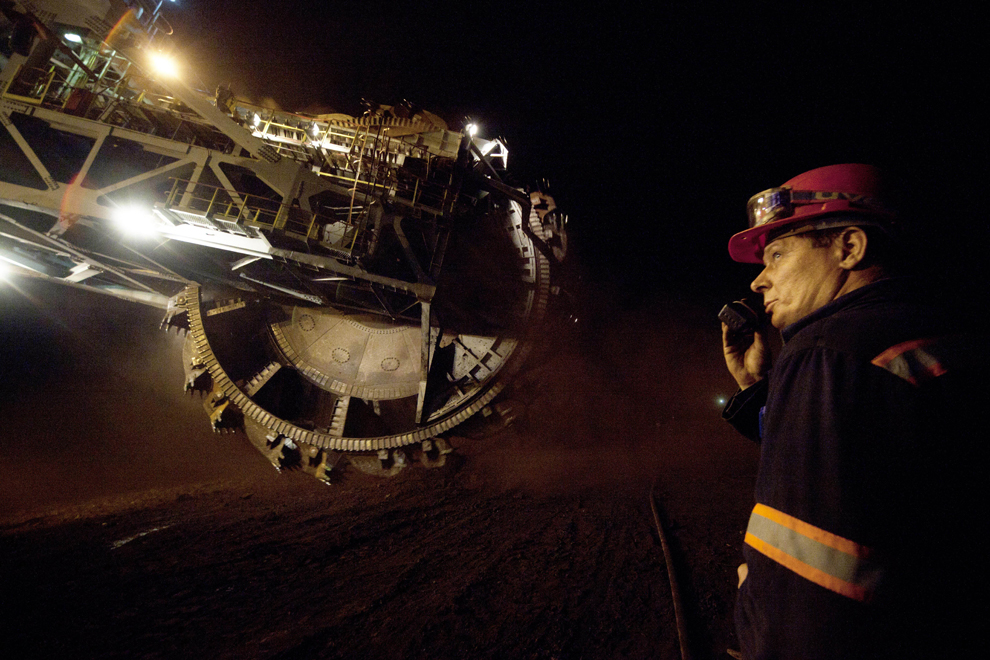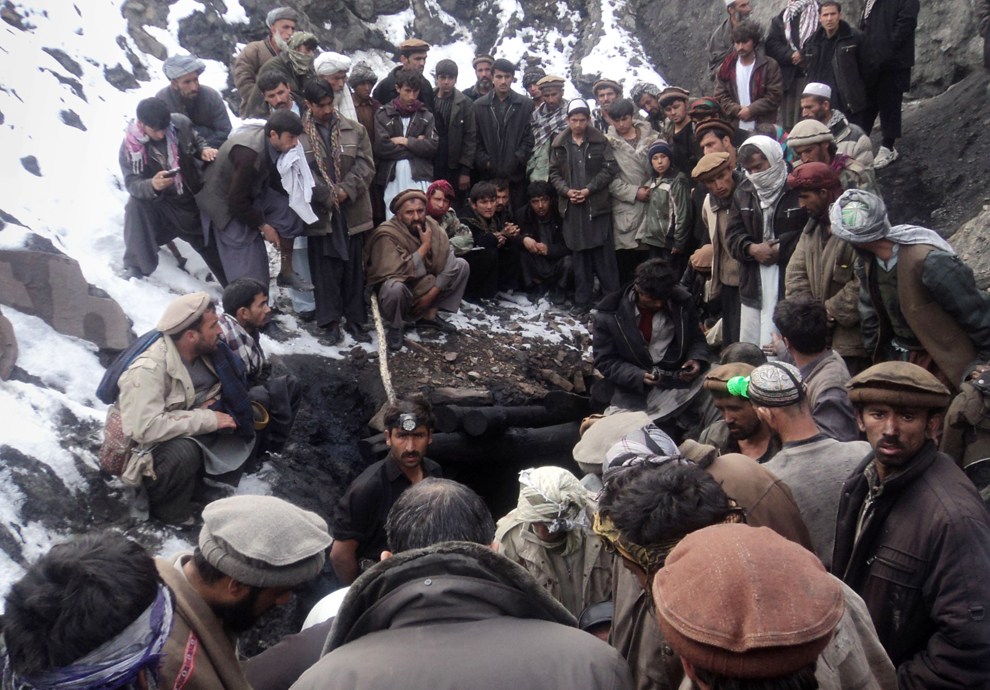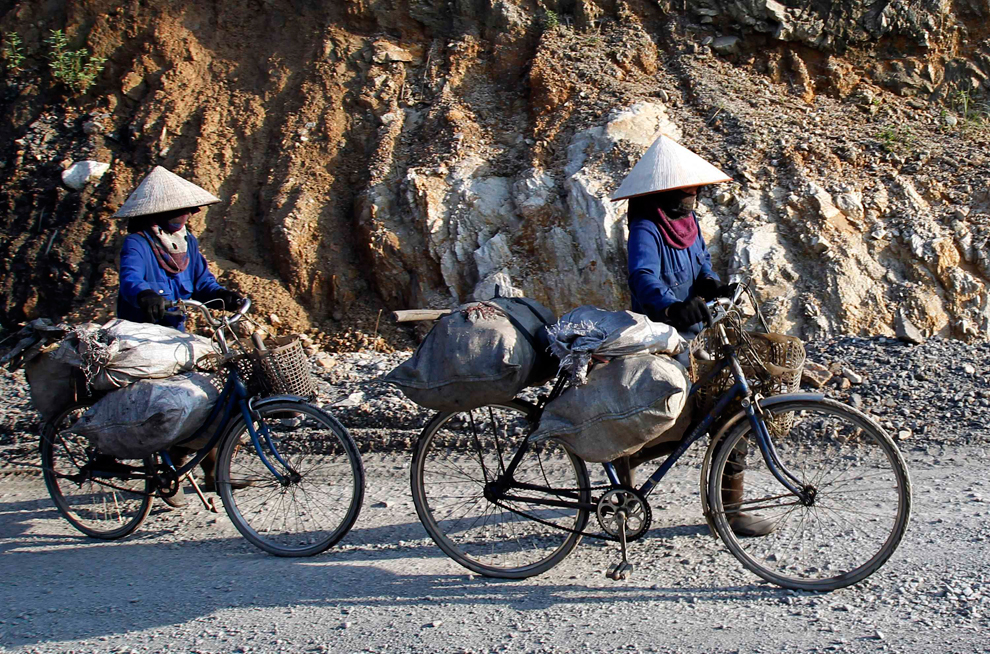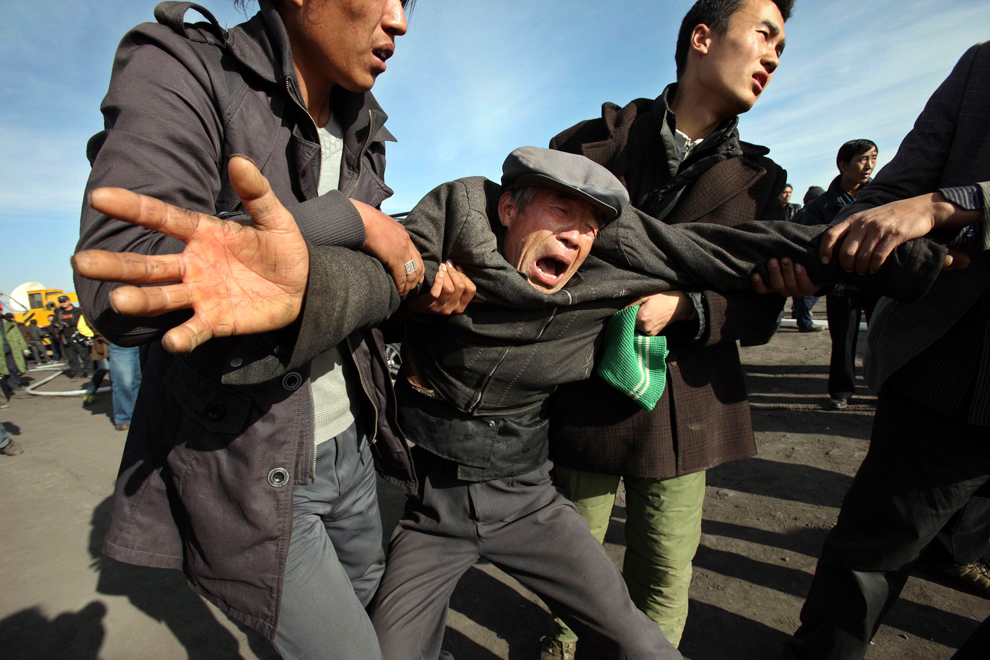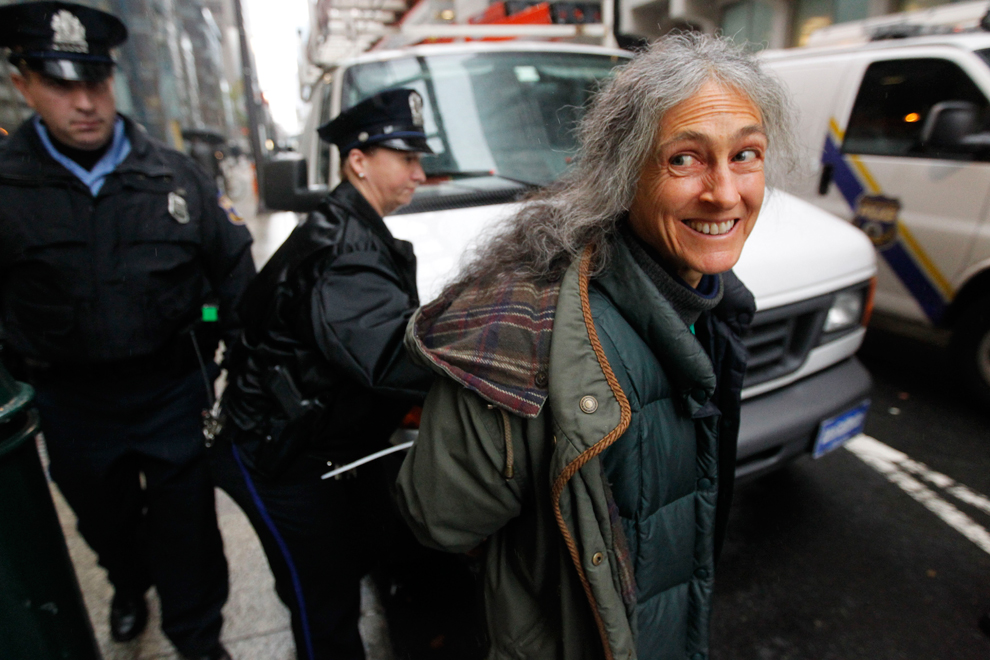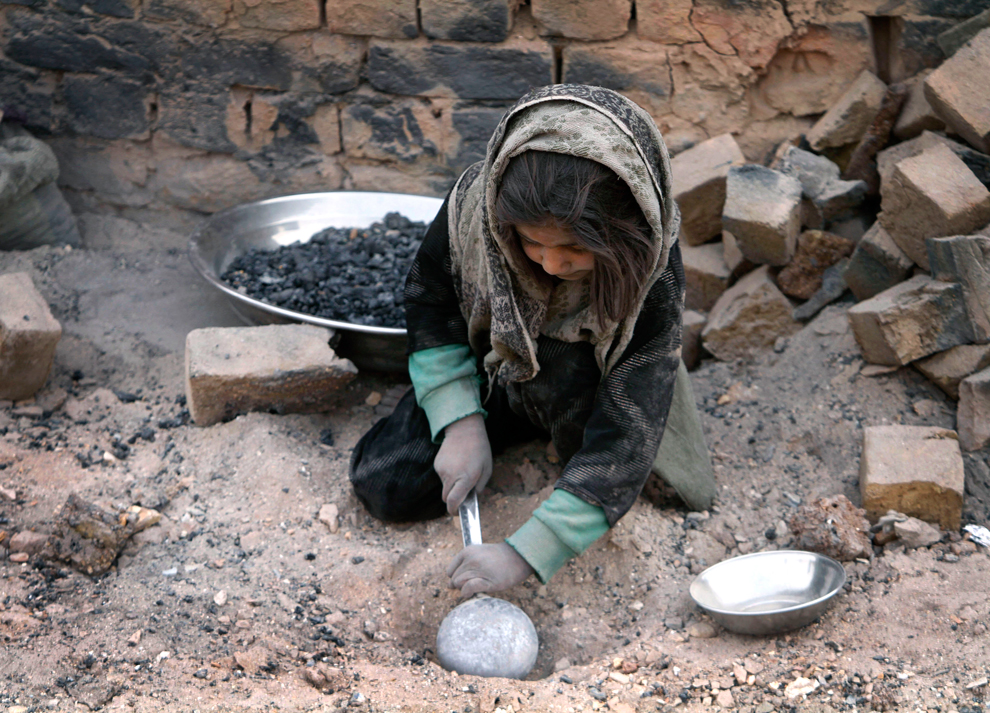Coal occupies a
central position in modern human endeavors. Last year over 7000
megatons were mined worldwide. Powerful, yet dirty and dangerous, use
of coal is expanding every year, with 2010 witnessing a production
increase of 6.8%. Around 70 countries have recoverable reserves, which
some estimates claim will last for over a hundred years at current
production levels. Mining for coal is one of the world's most dangerous
jobs. While deadliest in China, where thousands of miners die
annually, the profession is still hazardous in the West and other
regions as well. Our mining and use of coal accounts for a variety of
environmental hazards, including the production of more CO2 than any
other source. Other concerns include acid rain, groundwater
contamination, respiratory issues, and the waste products which contain
heavy metals. But our lives as lived today rely heavily on the
combustible sedimentary rock. Over 40% of the world's electricity is
generated by burning coal, more than from any other source. Chances
are that a significant percentage of the electricity you're using to
read this blog was generated by burning coal. Gathered here are images
of coal extraction, transportation, and the impact on environment and
society. The first eight photographs are by Getty photographer Daniel
Berehulak, who documented the lives of miners in Jaintia Hills, India.
-- Lane Turner

22-year-old
Shyam Rai from Nepal makes his way through tunnels inside of a coal
mine 300 ft beneath the surface on April 13, 2011 near the village of
Latyrke, in the district of Jaintia Hills, India. In the Jaintia hills,
located in India's far northeast state of Meghalaya, miners descend to
great depths on slippery, rickety wooden ladders. Children and adults
squeeze into rat hole like tunnels in thousands of privately owned and
unregulated mines, extracting coal with their hands or primitive tools
and no safety equipment. (Daniel Berehulak/Getty Images)

A
crane lifts miners out of a 300ft deep mine shaft as they head out for
their lunch break on April 13, 2011 in Jaintia Hills, India. Workers
can earn as much as 150 USD per week or 30,000 Rupees per month,
significantly higher than the national average of 15 USD per day.
(Daniel Berehulak/Getty Images) #

38-year-old
Prabhat Sinha carries a load of coal weighing 60kgs, supported by a
head-strap, as he ascends the staircase of a coal mine on April 16, 2011
in Jaintia Hills, India. After traversing treacherous mountain roads,
the coal is delivered to neighboring Bangladesh and to Assam from where
it is distributed all over India, to be used primarily for power
generation and as a source of fuel in cement plants. (Daniel
Berehulak/Getty Images) #

20-year-old
Anil Basnet sits for a portrait above the coal mine where he works on
April 13, 2011 in Jiantia Hills, India. Many workers leave homes in
neighboring states, and countries, like Bangladesh and Nepal, hoping to
escape poverty and improve their quality of life. (Daniel
Berehulak/Getty Images) #

20-year-old
Anil Basnet pushes a coal cart, as he and a fellow worker pull coal out
from the rat hole tunnel 300 ft below the surface on April 13, 2011 in
Jaintia Hills, India. Some miners send money back to loved ones at
home, whilst many others squander their earnings on alcohol, drugs and
prostitution in the dusty, coal mining towns like Lad Rymbai. (Daniel
Berehulak/Getty Images) #

A
boy works at a coal depot on April 16, 2011 in Jaintia Hills, India.
Some of the labor is forced, and an Indian NGO group, Impulse, estimates
that 5,000 privately-owned coal mines in Jaintia Hills employed some
70,000 child miners. The government of Meghalaya refuted this figure,
claiming that the mines had only 222 minor workers. Despite the ever
present dangers and hardships, children, migrants and locals flock to
the mines hoping to strike it rich in India's wild east. (Daniel
Berehulak/Getty Images) #

School
children walk through a coal depot on their way home from school on
April 14, 2011 in Jaintia Hills, India. Local schools in the area,
providing free tuition, find it difficult to convince parents of the
benefits of education, as children are seen as sources of income. The
lure of the mines is stronger than that of the classroom. (Daniel
Berehulak/Getty Images) #

Thirteen-year-old
student Kala Rai attends an English grammar class at the Biateraim
Presbyterian school on April 15, 2011 in Jaintia Hills, India. Kala
worked in the mines for 6 months from the age of 12. Teachers from the
school convinced her parents to stop her working in the mines and to
send her to school. Kala aspires to be a doctor to treat the ailments
of her family and friends. (Daniel Berehulak/Getty Images) #
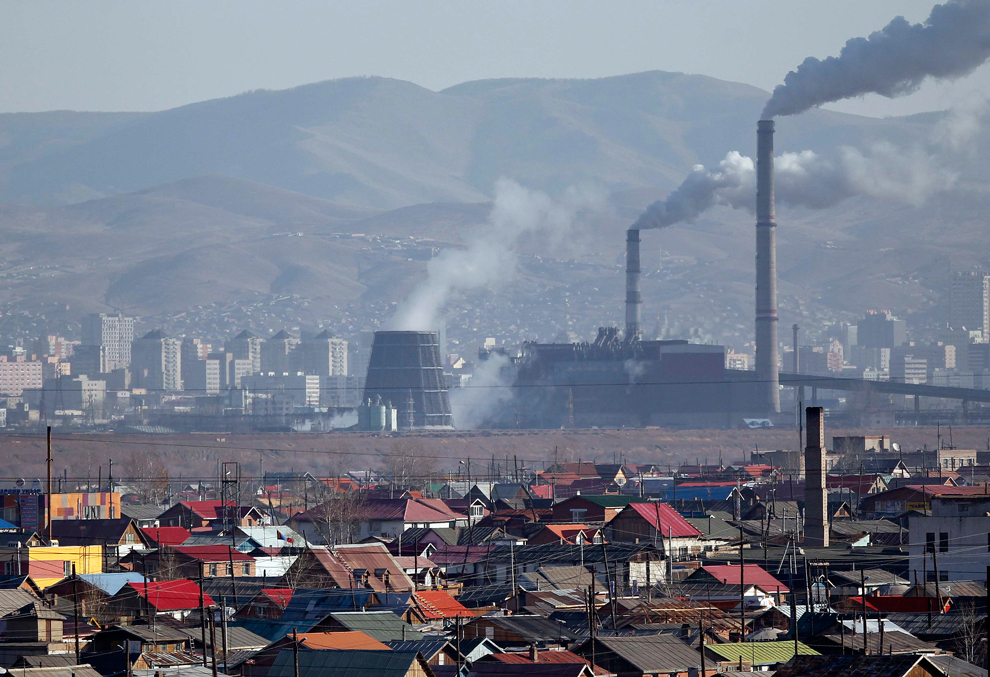
Smoke
billows from the chimneys of a coal-burning power plant in Ulan Bator,
Mongolia on October 14, 2011. Ulan Bator's pollution is seasonal, with
relatively low amounts in summer, but critical levels in the depths of
winter when the PM10s can reach 2000 micrograms per cubic meter in the
worst affected areas. The 10 most polluted cities on the planet are all
in emerging-market or developing countries: Iran, Pakistan, India,
Botswana and Mongolia. (Carlos Barria/Reuters) #

Jimmy
Murphy of Sprigg, W.Va. holds a jar filled with well water from his
home on November 15, 2010. He says the water was contaminated with coal
slurry by Massey Energy and subsidiary Rawl Sales & Processing.
Mining company Massey Energy settled a 7-year-old lawsuit with hundreds
of southern West Virginia residents who claim the company poisoned their
drinking water supplies with coal slurry. (Jeff Gentner/AP) #

Relatives
comfort each other during the funeral of a miner killed in a mine
blast, in Makiyivka, Ukraine on July 31, 2011. Eleven miners were
killed in the accident at the Bazhanova pit in the town of Makiyivka in
the Donetsk region where a concrete mine headframe collapsed. Ukraine
held a day of mourning July 31 for 37 miners killed in two separate
accidents in coal pits in the country's eastern industrial district as
the last bodies were pulled from the rubble. (Alexander
Khudoteply/AFP/Getty Images) #
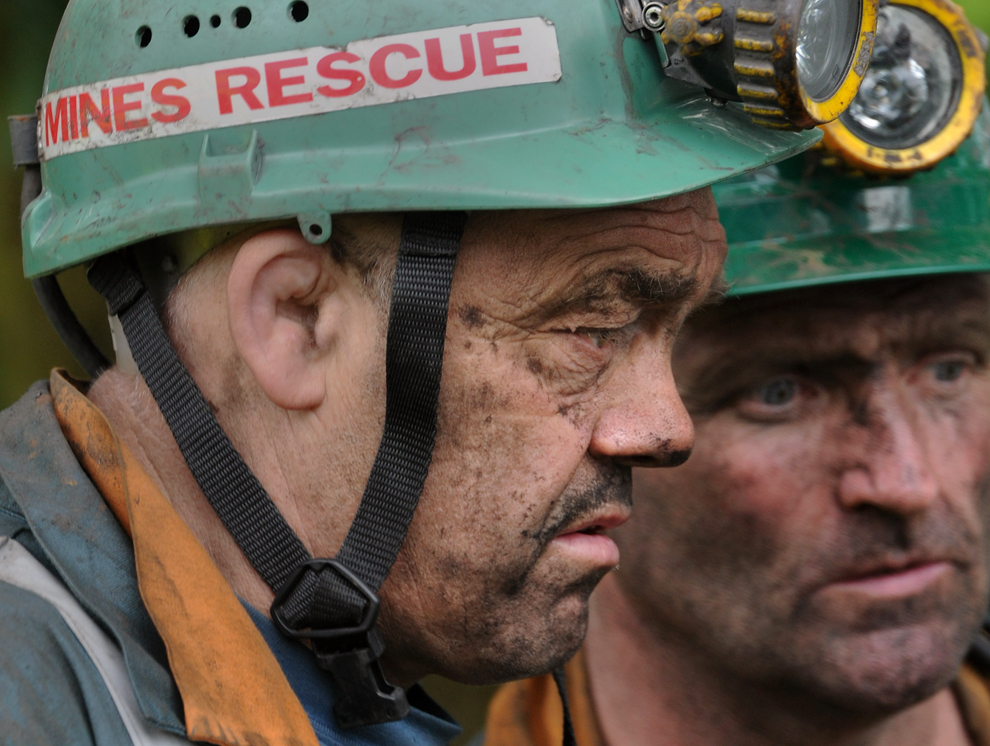
Two
mine rescue workers leave the Rhos community center as emergency
services and rescue specialists continue the operation to rescue four
Welsh miners that were trapped 300ft underground after a coal mine
tunnel collapsed and flooded near the village of Cilybebyll, Wales on
September 16. All four died. (Matt Cardy/Getty Images) #
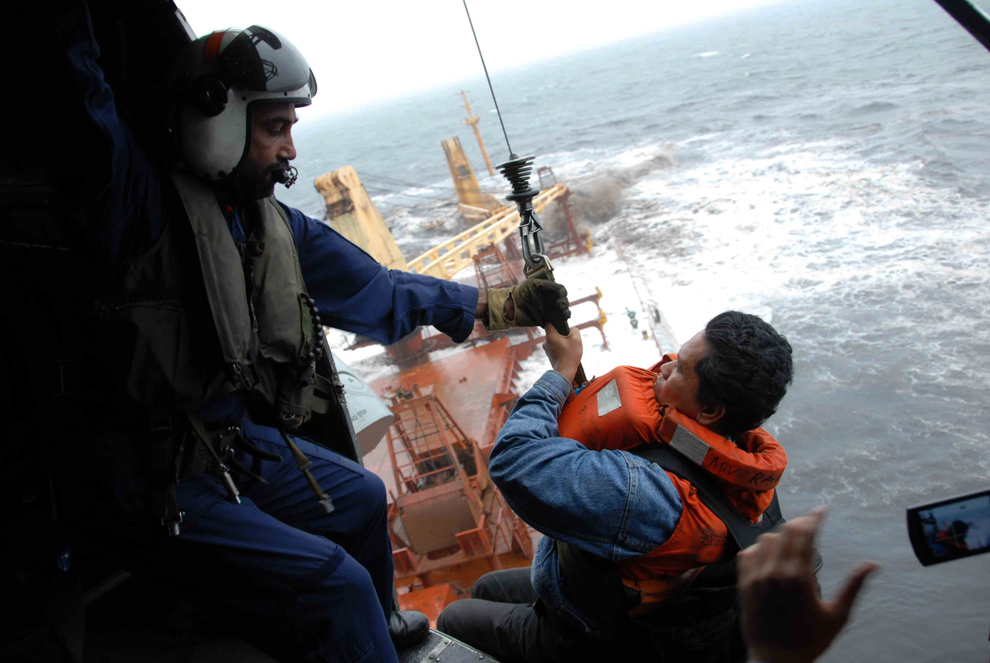
A
crew member of the submerged ship MV Rak Carrier is winched into a
Seaking helicopter off the coast of Mumbai on August 4, 2011. The
Panama-flagged MV Rak Carrier, transporting 60,000 tons of coal from
Indonesia to India, sank off the coast of Mumbai after its crew were
rescued when it began taking on water in stormy seas. (Indian Ministry
of Defense/HO/AFP/Getty Images) #
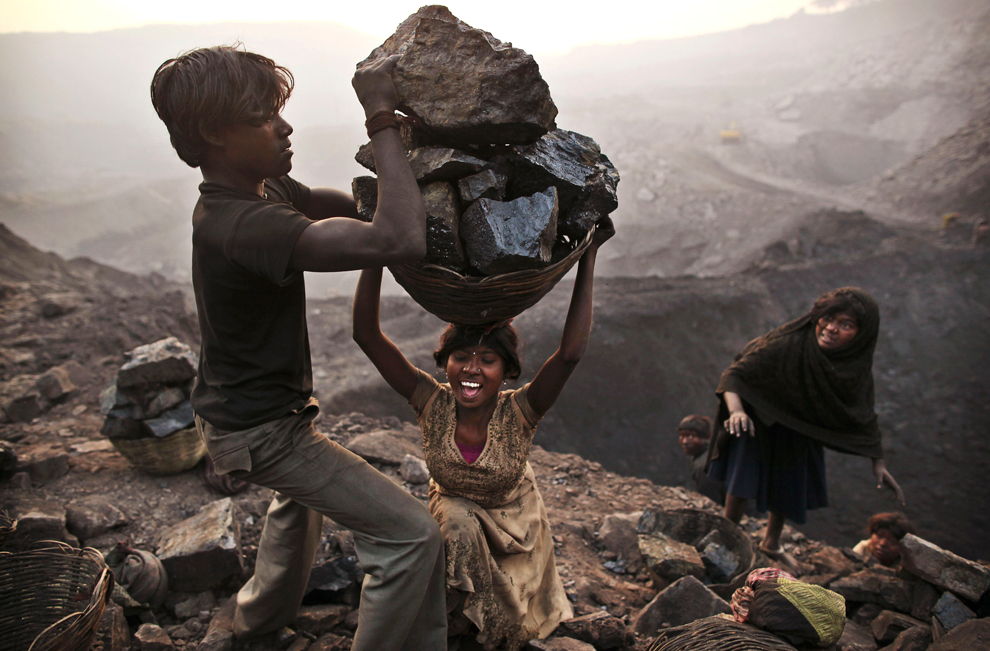
A
young woman stumbles as she tries to carry a large basket of coal as
they illegally scavenge at an open-cast mine in the village of
Bokapahari, India, where a community of coal scavengers live and work.
The contrast between India old and new is nowhere more vivid than among
the villages of coal scavengers in eastern India, sitting on an
apocalyptic landscape of smoke and fire from decades-old underground
coal fires. While India grows ever more middle-class and awash in
creature comforts, these villagers risk their lives scavenging coal
illegally for a few dollars a day, and come back to homes that at any
moment could be swallowed by a fresh fire-induced crack in the earth.
(Kevin Frayer/AP) #

Locals
face riot police while blocking a highway in Haimen, China on December
22, 2011 during a protest against a plan to build a coal-fired power
plant. Thousands of angry residents in the town surrounded a government
building and blocked an expressway, and online accounts of the incident
claimed two people had died. (David Gray/Reuters) #
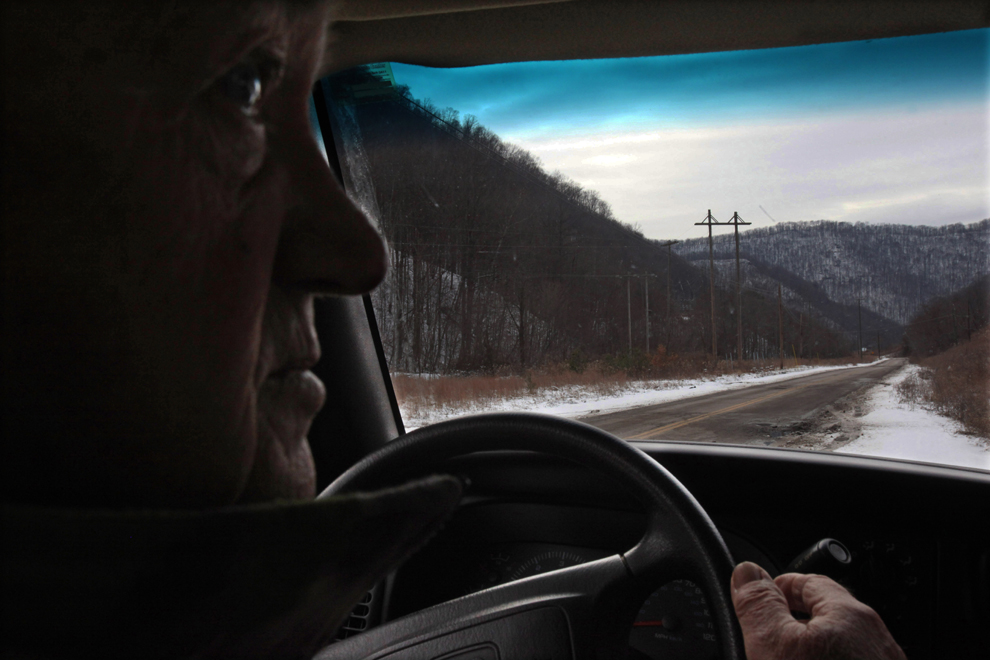
Big
coal companies are buying out small mining towns along Route 26 in West
Virginia, a highway linking Bandytown, Twilight, and Lindytown. High
above Route 26 the coal companies are in the process of mountaintop
removal mining. Lifelong resident of Lindytown Leo Cook, 75, drove
along Route 26 reminiscing about his childhood and pointing out all that
is gone. (Nicole Bengiveno/The New York Times)#
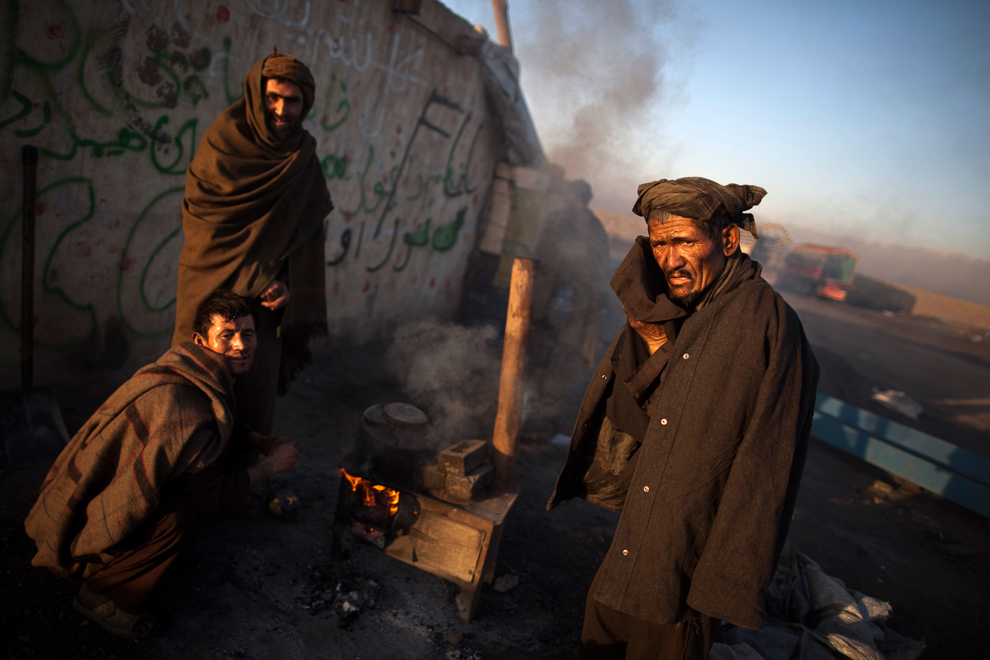
A
laborer (right) at a coal dump site cleans his face after washing in
the early morning hours outside Kabul October 18, 2011. Each laborer
earns $10 on an average working day. Most of them come from the
northern provinces, leaving their families behind in search of fortune
in the capital. (Ahmad Masood/Reuters) #
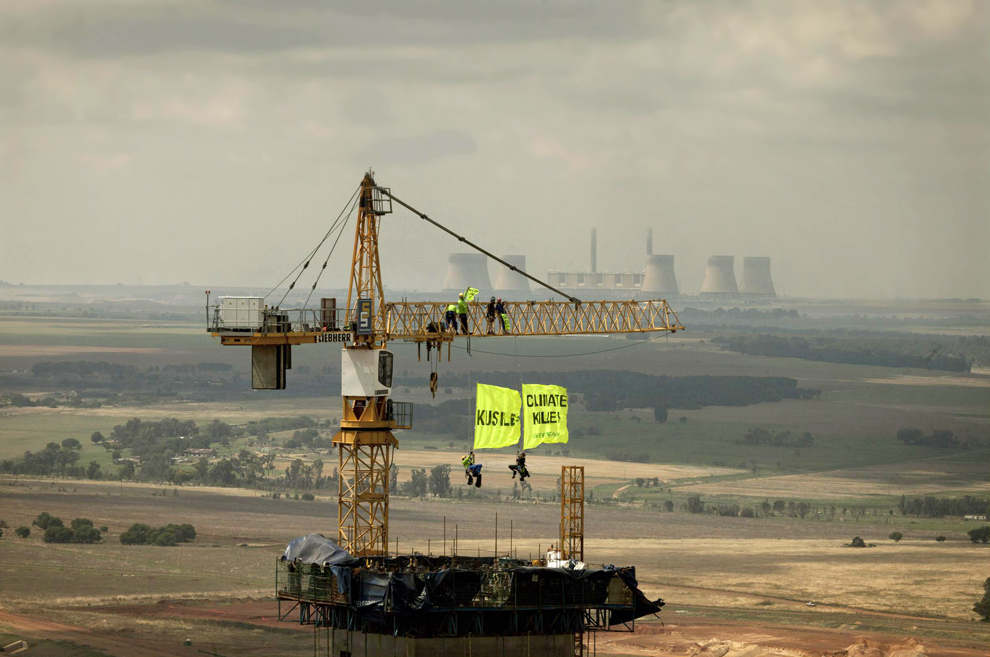
Greenpeace
activists hang from a crane inside Eskom's Kusile power plant in the
Delmas municipal area of South Africa with banners reading 'Kusile:
Climate Killer' on November 7, 2011. Greenpeace is calling on the state
owned utility ESKOM to abandon the Kusile coal fired power plant, which
is set to become world's fourth most polluting power plant in terms of
greenhouse gas emissions and to instead invest in both green energy
sources and jobs. Shayne Robinson/Greenpeace Handout/AFP/Getty Images) #
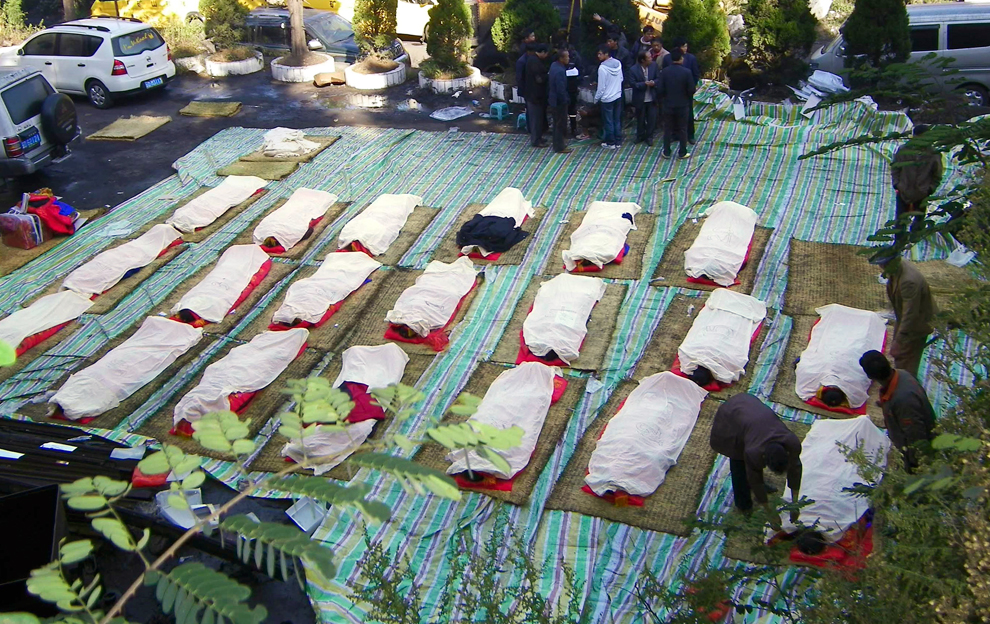
Relatives
identify bodies of killed miners at the Sizhuang Coal Mine after a gas
leak in Shizong county in China's Yunnan province on November 11, 2011.
Hundreds of rescuers took turns descending into the illegally operated
coal mine to search for miners trapped by a gas leak in the country's
second deadly mining accident in less than a week. (AP)#
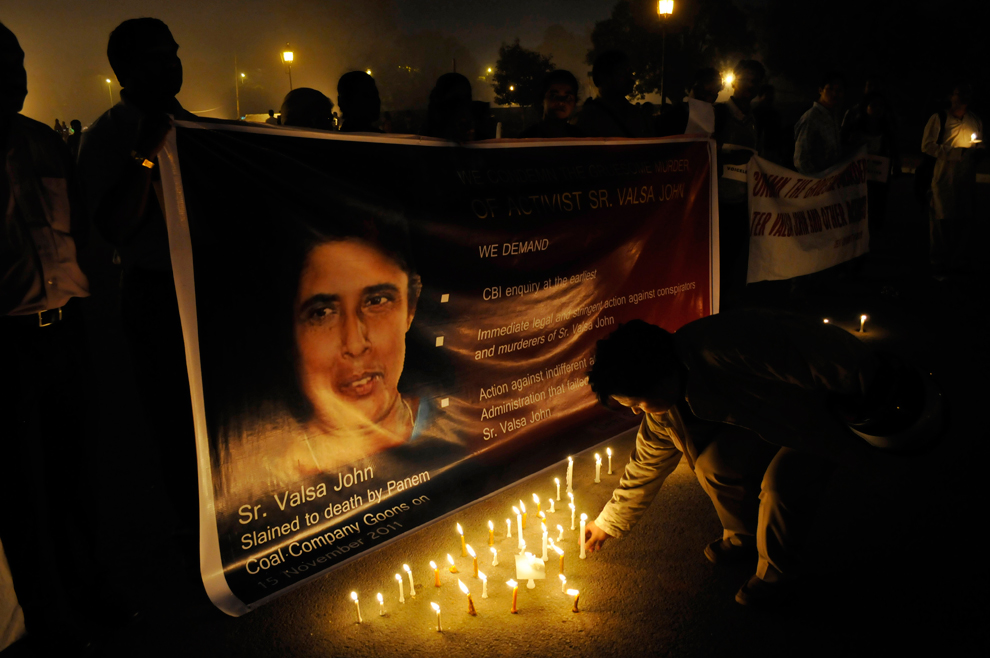
Supporters
of Catholic nun Sister Valsa John participate in a candlelight vigil
demanding an inquiry into her murder in New Delhi on November 22, 2011.
She was hacked to death in Jharkhand, and had been threatened by coal
mine bosses for defending the rights of local tribespeople. Jharkhand
police said around 50 men barged into the house where she was staying,
and her mutilated body was found by police. (Tsering Topgyal/AP)#
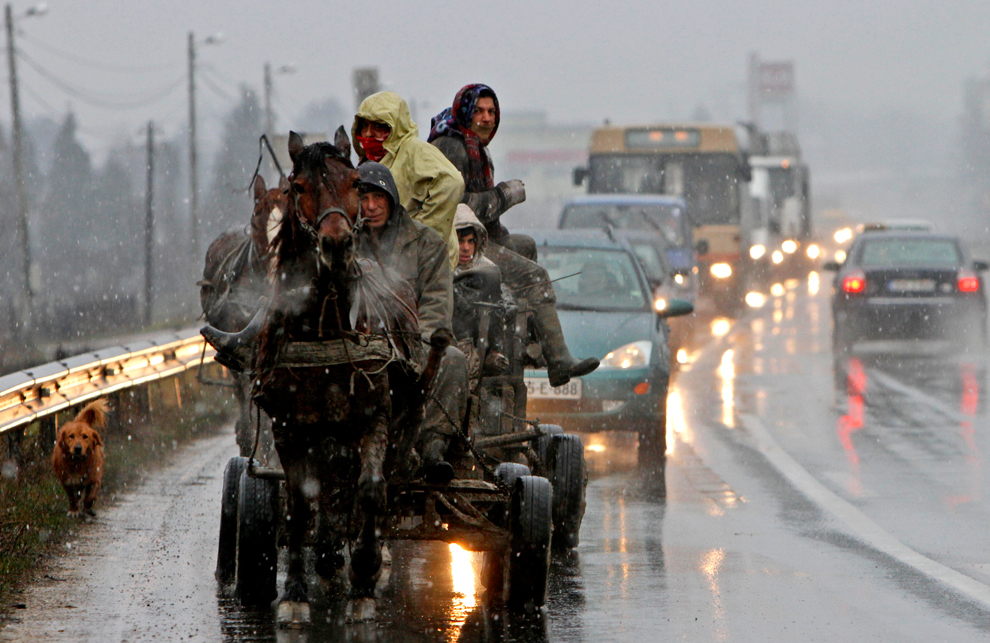
A
group of Bosnians transport coal for heating in horse-drawn carts near
Sarajevo on January 9, 2012. The average unemployment rate is up to 42
percent, according to the Bosnian government. Collecting coal by hand
and selling it on a local market is the only way an impoverished
category of the Bosnian population can survive the winter. (Amel
Emric/Associated Press)#

